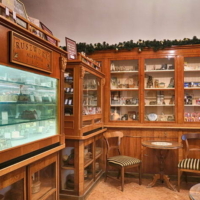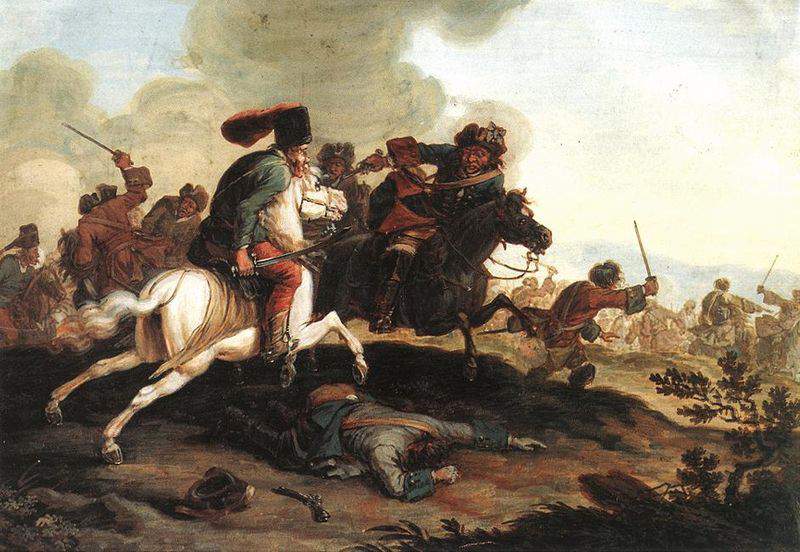Get to know the Kuruc rebels who almost broke Habsburg rule in Hungary
While the Hussars are the most popular group of fighters in Hungarian history, there is another small organization who dedicated their lives to the fight for Hungarian independence. The Kuruc were the freedom fighters during the Habsburg oppression, led most importantly by Ferenc Rákóczi II.
1 – What does ‘kuruc’ mean?
First off, in Hungarian, ‘kuruc’ is singular, while the plural is ‘kurucok’. In English, the singular is used to denote them as a whole group, pronounced somewhat like ‘kuruts’.
When this group of rebels first came to being, their denomination meant ‘rebel, partisan, dissident’, quite obviously, since they went against the Habsburg rule – though some historians today are unsure of its origins. An Ottoman scholar concluded that the word ‘kuruc’ is of Greek origins, meaning ‘polished’, but that has little to do with the Hungarian freedom fighters.
Interestingly, the men of the first kuruc uprising (there was more than one, as you will find out later) referred to themselves as ‘bujdosók’ (fugitives) and not as ‘kuruc’.
The leader of the second uprising, Rákóczi, did not use the word ‘kuruc’ either, he preferred ‘insurgents’ or ‘malcontents’, highlighting their purposes.
2 – Kuruc or labanc?
If you come across the word ‘kuruc’ in texts, you will almost always find the name of another group, the ‘labanc’. There is a simple reason for this – the kuruc fought against the labanc. The latter ones were Austrian soldiers and this title is a form of mockery:
the word ‘labanc’ comes from the Hungarian ‘lobonc’ which means ‘long hair’, referring to the fact that the Austrian soldiers often wore wigs.
3 – They were the stars of the current pop culture
The Kuruc were very popular among oppressed Hungarians, so, naturally, several songs were written about them, mostly combining the traits of the traditional old folk songs and the new trends. The majority of these songs were written by the Kuruc soldiers themselves, expressing the sorrows of refugees, recalling their adventures, praising the bravery of men and lamenting the cruel political system.
4 – The aim: to break the chain of Habsburg absolutism
By the end of the 17th century, most Hungarian territories were taken back from the Ottomans, and these fell under Habsburg rule. This period was characterised by political oppression on the side of the Habsburgs towards the Hungarian population, manifesting mostly in heavy taxation, stripping away of rights (especially of Protestants’) and military encroachment.
Naturally, a group of mostly serfs and Hungarian Protestant peasants, as well as some Slavs, were discontent with the way the Habsburg Empire treated, or more like tramped all over the Kingdom of Hungary.
The first serious turmoil started in 1672 when a light cavalry comprised of Protestants invaded Upper Hungary. Here, their biggest mistake was the looting of Northern counties where the Habsburg troops intervened and defeated the Kuruc.
This defeat was followed by religious and political persecution. 300 Protestant pastors were even sentenced to death in 1674, though they were sold as galley slaves in Naples in the end. This event caused public outrage all over Europe.
5 – A politically well-organised group, not just vicious rebels
The rebels might have realised that they would not get far if they used violence as their primary and only tool in this war, so, after they have occupied Debrecen in 1675, they re-invented themselves as an independent community. They issued decrees, had their own seal, held Diets where they discussed the progress of their endeavour, and even made alliances with Poland and France.
6 – Like father like son: uprisings led by Imre Thököly and Ferenc Rákóczi II
Not much later, Imre Thököly led an uprising of a much bigger volume between 1678-1685. His rebellious troops began to occupy Hungarian territories in June 1678, and by August, they reclaimed almost all of lower and upper Hungary, having broken the rule there.

Both Thököly and Rákóczi are honoured with a statue at Heroes’ Square
He had a step-son, Ferenc Rákóczi II, who followed in his footsteps and led the Hungarian War of Independence between 1703 and 1711. However, the nobility did not believe in him and his troops, claiming that they are simply jumpstarting a peasant rebellion. Over these 8 years, the two sides were unable to negotiate a peace treaty for one reason or another (mostly financial on both parts). Rákóczi’s freedom fight took an unfortunate turn when, at the Battle of Trenčín, Rákóczi’s horse stumbled and the fall left the leader unconscious. Most of the Kuruc thought that he was dead, so they scattered, while several leaders switched sides, hoping to ease their situation.
Featured image: Sword fight between Kuruc and Labanc horsemen during Rákóczi’s War of Independence by Georg Phillip Rugendas Sr.
Source: Daily News Hungary
please make a donation here
Hot news
Fine dining in Budapest is more expensive than in France or Spain!
Attention: Change in Turkish low-cost airline flying from Budapest to Istanbul
Orbán: Voting for the left means supporting war
Orbán-ally oligarchs made EUR 38 billion in state motorway concession
Third Hungarian UNESCO department established
What happened today in Hungary? — 2 May, 2024




